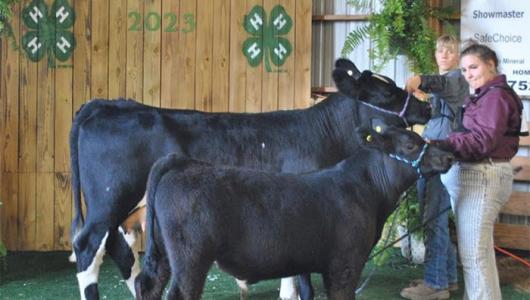USDA recognizes that socially disadvantaged farmers and ranchers have faced systemic discrimination with cumulative effects that have, among other consequences, led to a substantial loss in the number of socially disadvantaged producers, reduced the amount of farmland they control, and contributed to a cycle of debt that was exacerbated during the COVID-19 pandemic. During the pandemic, socially disadvantaged communities saw a disproportionate amount of COVID-19 infection rates, loss of property, hospitalizations, death, and economic hurt.
To address these systemic challenges, the American Rescue Plan Act of 2021 provides historic debt relief to socially disadvantaged producers including Black/African American, American Indian or Alaskan native, Hispanic or Latino, and Asian American or Pacific Islander.
USDA is now reviewing and working to gather feedback to implement the Act, and more guidance will be forthcoming for socially disadvantaged borrowers with direct or guaranteed farm loans as well as Farm Storage Facility Loans.
As information becomes available, it will be provided directly to socially disadvantaged borrowers and stakeholder groups representing socially disadvantaged producers, posted here on farmers.gov, and shared through our social media channels, email newsletters, and the media
Find your nearest service center at farmers.gov/service-locator.
We Answer Three Common Questions about the American Rescue Plan Debt Relief for Socially Disadvantaged Producers
1. Who qualifies for this debt relief?
Any socially disadvantaged borrower with direct or guaranteed farm loans as well as Farm Storage Facility Loans qualifies. The American Rescue Plan Act uses the 2501 definition of socially disadvantaged, which includes Black/African American, American Indian or Alaskan native, Hispanic or Latino, and Asian American or Pacific Islander. Gender is not a criteria in and of itself, but of course women are included in these categories.
2. I qualify as socially disadvantaged under the American Rescue Plan definition, but I am not late on my payments. Do I still qualify?
Yes. Any socially disadvantaged borrower with direct or guaranteed farm loans as well as Farm Storage Facility Loans qualifies.
3. When will qualified borrowers begin to see a loan pay-off or other payment in response to the American Rescue Plan?
USDA is now reviewing and working to gather feedback to implement the Act, and more guidance will be forthcoming for socially disadvantaged borrowers with direct or guaranteed farm loans as well as Farm Storage Facility Loans. For borrowers in arrears, the moratorium established on January 26th to stop all debt collections, foreclosures and evictions for all borrowers, including socially disadvantaged producers, remains in effect.
What You Can Do Now
Producers who have worked with USDA’s Farm Service Agency previously may have their ethnicity and race on file. A borrower, including those with guaranteed loans, can contact their local their local USDA Service Center to verify, update or submit a new ethnicity and race designation using the AD-2047.
Find your nearest service center at farmers.gov/service-locator.
To learn more about USDA’s work to implement the American Rescue Plan Act of 2021, visit www.usda.gov/arp.

USDA Farm Loans
The Farm Service Agency offers loans to help farmers and ranchers get the financing they need to start, expand or maintain a family farm or ranch. Our loans offer access to funding for a wide range of farmer needs, from securing land to financing the purchase of equipment. Learn more about loan options by visiting the Farm Loan Discovery Tool on farmers.gov.
More Information
In the Biden-Harris Administration, USDA is committed to transforming America’s food system with a greater focus on more resilient local and regional food production, fairer markets for all producers, building new markets and streams of income for farmers and producers using climate smart food and forestry practices, making historic investments in infrastructure and clean energy capabilities in rural America, and committing to equity across the Department by removing systemic barriers and building a workforce more representative of America.
To learn more about USDA’s work to implement the American Rescue Plan Act of 2021, visit www.usda.gov/arp.
Zack Ducheneaux is the Administrator for the Farm Service Agency.


